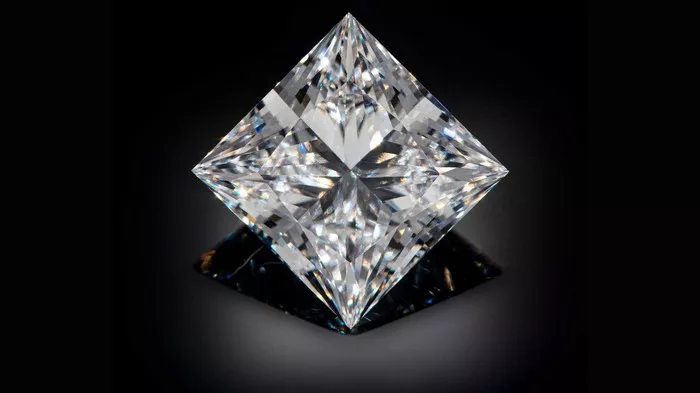When evaluating whether a loose diamond is real, it’s crucial to apply a combination of practical tests and expert techniques to ascertain its authenticity. Diamonds are prized for their brilliance and durability, but their value and integrity depend on verifying their genuine nature. Here’s an extensive guide to help you determine if a loose diamond is real.
1. Understanding Diamond Characteristics
Before diving into methods for verifying a diamond’s authenticity, it’s essential to understand the fundamental characteristics of diamonds. Real diamonds possess unique qualities such as exceptional hardness, brilliant light reflection, and a high dispersion of light. Familiarity with these traits can help in distinguishing a real diamond from imitations.
2. The Fog Test
One of the simplest and most accessible tests for identifying a real diamond is the fog test. This method leverages a diamond’s ability to disperse heat and moisture. To perform this test:
Hold the diamond between two fingers.
Exhale on it, creating a fog on its surface.
Observe how quickly the fog dissipates.
In a genuine diamond, the fog will clear almost immediately due to its high thermal conductivity. If the fog lingers, the diamond might be a fake.
3. The Water Test
The water test is another straightforward method. It involves:
Filling a glass with water.
Dropping the loose diamond into the water.
Real diamonds are denser than most imitation stones, so a genuine diamond will sink to the bottom, while many imitations will float or hover. This method isn’t foolproof but can offer preliminary insights.
4. The Loupe Examination
Using a jeweler’s loupe or magnifying glass allows you to examine a diamond’s internal and external characteristics closely. Look for:
Inclusions (Internal Flaws): Real diamonds often have inclusions or imperfections. A diamond free of these could be a sign of a synthetic or high-quality imitation.
Clarity: Genuine diamonds typically exhibit certain inclusions that can be magnified with a loupe, distinguishing them from flawless imitations.
5. The Scratch Test
Diamonds are known for their exceptional hardness. To test this, gently scratch a piece of glass with the diamond. If the diamond leaves a mark or scratches the glass, it is likely real. However, this method should be used cautiously, as it could damage the diamond.
6. The Light Test
Real diamonds exhibit exceptional light dispersion, often displaying a spectrum of colors when exposed to light. To perform this test:
Place the diamond under a light source.
Observe the play of colors as it refracts and reflects light.
A real diamond will sparkle with a combination of white light and colored flashes, known as fire. Imitations may lack this brilliance or have a different light dispersion pattern.
7. Professional Appraisal
For the most accurate assessment, seek a professional appraisal. A certified gemologist uses advanced tools and techniques to verify a diamond’s authenticity. They will evaluate factors such as:
Refractive Index: Diamonds have a unique refractive index, which can be measured with specialized equipment.
Spectroscopy: This technique identifies the presence of specific elements and can distinguish real diamonds from synthetic ones.
Certification: Professional labs, such as the Gemological Institute of America (GIA), provide detailed reports on a diamond’s authenticity and quality.
8. The UV Light Test
Diamonds exhibit fluorescence under ultraviolet (UV) light. To conduct this test:
Use a UV light source, such as a black light.
Observe the diamond’s reaction.
Many real diamonds will emit a blue glow under UV light, although not all will. Some synthetic diamonds and imitations might not react as expected, but this test alone cannot confirm authenticity.
See Also: What is a Journey Diamond? A Comprehensive Guide
9. Comparing with Known Diamonds
If you have access to another certified diamond, compare the loose diamond in question with the known genuine one. Look for similarities and differences in brilliance, color, and inclusions. This comparative method can provide additional clues but should be used in conjunction with other tests.
10. Verifying the Setting and Certification
If the diamond is part of a piece of jewelry, examine the setting and any accompanying certification. Genuine diamonds often come with certification from recognized gemological laboratories. Check for:
Certification Documents: These should include details on the diamond’s quality and authenticity.
Setting: Authentic diamonds are usually set with precision, and the setting should not have any signs of tampering or unusual adjustments.
11. Evaluating the Diamond’s Weight and Size
Compare the diamond’s weight and size to standard measurements. Real diamonds have specific density and weight characteristics, and deviations from these norms can indicate an imitation. Using a precise scale and measuring tools can help in this evaluation.
12. Heat Conductivity Test
Diamonds conduct heat extremely well. A thermal conductivity probe can be used to test a diamond’s ability to transfer heat. This specialized tool is often used by gemologists and can help confirm authenticity with high accuracy.
13. The Magnet Test
Diamonds are not magnetic, so a simple magnet test can help in distinguishing between real diamonds and imitations. If a diamond is attracted to a magnet, it is likely not a real diamond.
14. Reviewing the Cut Quality
The quality of a diamond’s cut affects its brilliance and sparkle. Examine the diamond’s cut and symmetry. Real diamonds typically have well-cut facets that maximize their sparkle, whereas poorly cut imitations may lack this quality.
15. Seeking Expert Opinions
Finally, if you are still unsure about the authenticity of a loose diamond, consult with multiple experts. Different gemologists may provide additional insights and verify the diamond’s authenticity with various methods.
Conclusion
Determining if a loose diamond is real involves a combination of practical tests, expert evaluations, and careful observation. While simple methods like the fog and water tests can provide preliminary indications, a professional appraisal offers the ultimate assurance of authenticity. By understanding the characteristics of real diamonds and using a range of testing techniques, you can make an informed judgment about the diamond’s genuineness and value.

